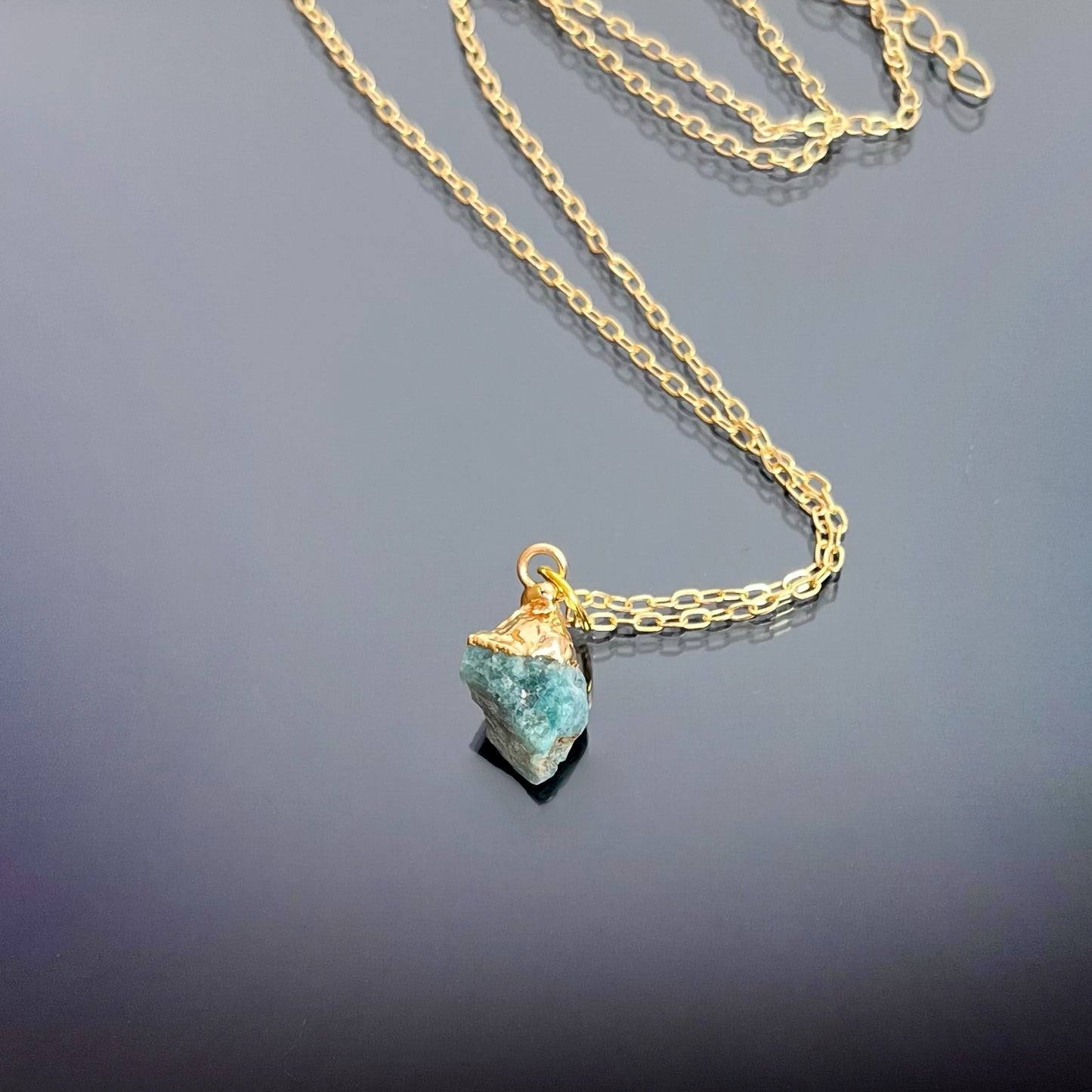Aquelia Design
Колие със суров Aпатит
Колие със суров Aпатит
Редовна цена
€54,00 EUR
Редовна цена
€65,00 EUR
Продажна цена
€54,00 EUR
Единична цена
/
по
С включени данъци.
Доставката се изчислява при плащане.
Наличността за получаване на място не можа да се зареди
Апатитът е група от фосфатни минерали, които са важен източник на фосфор, който е жизненоважен елемент за живота на растенията и животните. Ето основните свойства и характеристики на апатита:
Физически свойства:
- Химическа формула : Ca₅(PO₄)3(F,Cl,OH)
- Цвят : Обикновено зелен, но се среща и в сини, жълти, лилави, кафяви и безцветни разновидности
- Кристална система : Шестоъгълна
- Твърдост : 5 по скалата на Моос
- Специфично тегло : 3.1 - 3.2
- Прозрачност : Прозрачно до полупрозрачно
- Блясък : стъкловиден до суб-смолист
- Ивица : Бяла
Оптични свойства:
- Индекс на пречупване : 1.628 - 1.651
- Двойно пречупване : 0,002 - 0,008
- Плеохроизъм : Слаб, показва различни цветове, когато се гледа от различни ъгли
- Флуоресценция : може да флуоресцира под UV светлина, обикновено синя, зелена, жълта или виолетова
Лечебни и метафизични свойства:
- Енергия : Апатитът е за камък на проявлението и стимулира мислите и идеите.
- Чакри : Различните цветове на апатита се свързват с различни чакри: син апатит за гърлената чакра, зелен апатит за сърдечната чакра и т.н.
- Емоционално изцеление : Помага при комуникацията, мотивацията и себеизразяването. Намалява раздразнителността и емоционалното изтощение.
- Физическо лечение : Използва се в практики за лечение с кристали за поддържане на костите, зъбите и цялостното клетъчно здраве. Също така подпомага усвояването на хранителните вещества и насърчава образуването на нови клетки.
Употреби:
- Бижута : Благодарение на живите си цветове, апатитът е популярен в пръстени, колиета и обеци. Въпреки това, той изисква внимателно боравене поради относително ниската си твърдост.
- Декоративен : Използва се в дърворезби и декоративни предмети.
- Индустриален : Основен източник на фосфор за торове и други химически приложения.
Грижи:
- Почистване : Трябва да се почиства с топла сапунена вода и мека четка. Избягвайте агресивни химикали и ултразвукови почистващи препарати.
- Устойчивост : Апатитът е сравнително мек и може лесно да се надраска. Трябва да се съхранява отделно от по-твърдите скъпоценни камъни и да се пази от силни удари.
източници:
- Основни източници : Апатитът се намира по целия свят, със значителни находища в Бразилия, Мексико, Мианмар, Русия и Съединените щати.
Съвети за идентификация:
- Цвят и прозрачност : Живите цветове и прозрачността на апатита могат да помогнат при идентифицирането му, но може да бъде объркан с други скъпоценни камъни като берил или турмалин.
- Тестване : Гемологичните тестове могат да помогнат за разграничаване на апатита от подобни на вид минерали чрез неговата специфична гравитация, индекс на пречупване и флуоресценция.
Разнообразната цветова гама и метафизичните свойства на апатита го правят предпочитан избор сред колекционерите на скъпоценни камъни и практикуващите лечение на кристали. Основната му употреба като източник на фосфор подчертава значението му в селското стопанство и индустрията.
Сподели


